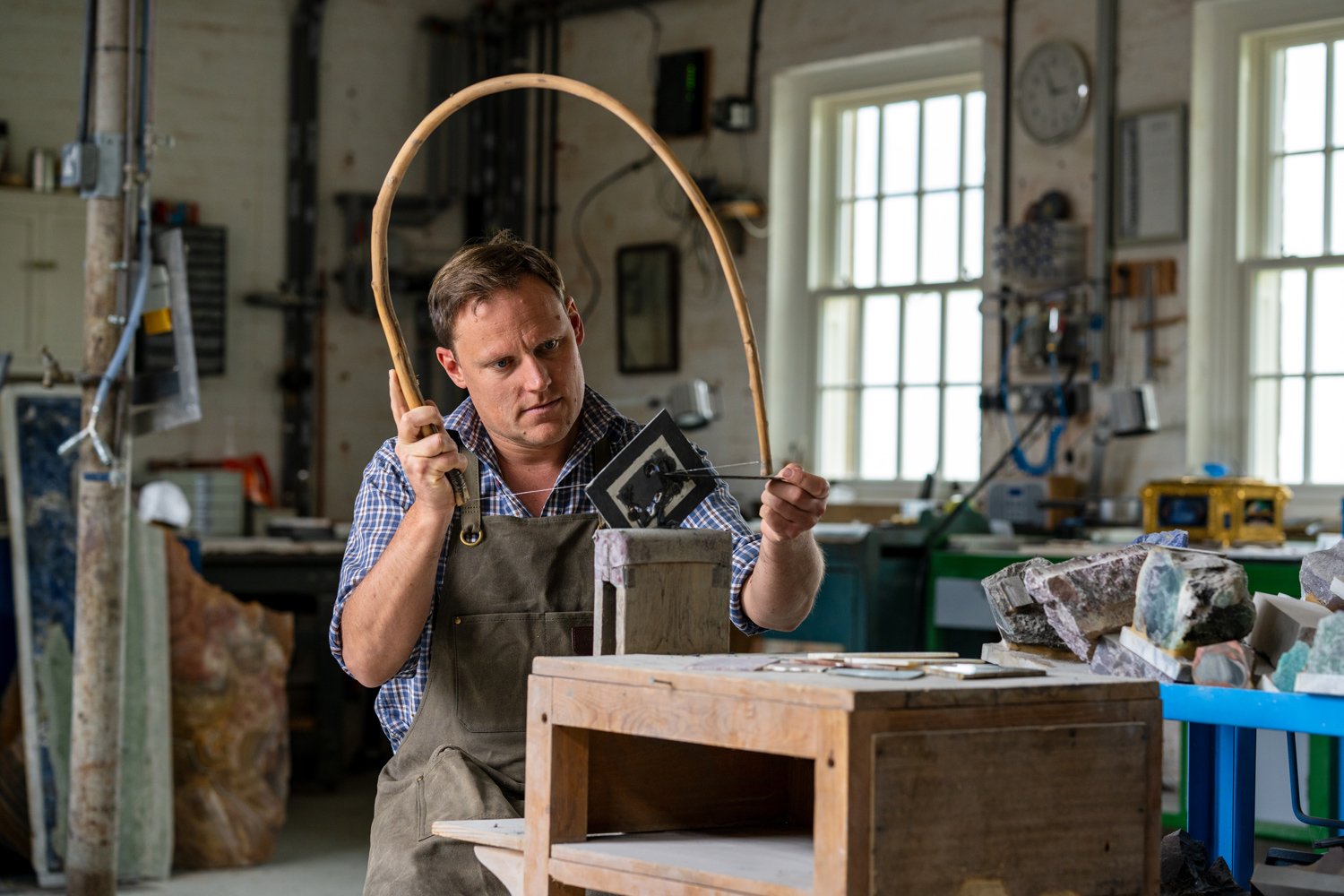“One of the most gifted and unusual mosaicists of our time”
– House&Garden
Sixteenth-century techniques
As the only craftsman in the UK to practise traditional pietra dura, Thomas delights in bringing this ancient art form to contemporary audiences.
Having started his career at the renowned Chippendale International School of Furniture, Thomas went on to study Italian Art History. It was whilst visiting the Opificio delle Pietre Dure museum in Florence that his fascination with the highly skilled art of pietra dura began.
Twenty-first-century design
Over the next few years, Thomas immersed himself in the world of pietra dura – training in Florentine workshops and learning directly from the old masters.
Returning to England in 2010, Thomas established Greenaway Mosaics from his home in the Northamptonshire countryside. Here, he continues to employ centuries-old techniques to produce pieces that are vibrant with colour and the beauty of life.
Awards and recognition
Thomas was awarded an honourable mention in the INTBAU ‘Excellence Awards’ in 2016. This led to a personal meeting at Clarence House with King Charles III.
In 2010, his Koi Carp wall plaque won Silver at The Goldsmiths’ ‘Craft & Design Council’ Awards.
Read Thomas’ interview in the Homo Faber guide (presented by the Michelangelo Foundation for Creativity and Craftsmanship).
In the studio
Watch Thomas at work to see some of the intricate processes involved in making pietra dura.





